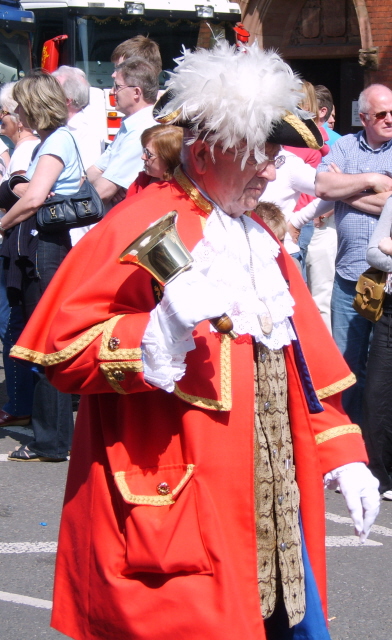|
List Of Assets Of Community Value
This is a partial and incomplete list of assets of community value registered under the Localism Act 2011 by local authorities in England. Owners of these properties must inform the local authority if they wish to sell the asset and should a community organisation wish to purchase it a moratorium period of six months is triggered to allow them the opportunity to raise sufficient money. Cambridgeshire Five local authorities maintain of assets of community value in Cambridgeshire; Cambridge City Council, South Cambridgeshire District Council, East Cambridgeshire District Council, Fenland District Council and Huntingdonshire District Council. Pubs Other facilities Cheshire Four local authorities maintain of assets of community value in Cheshire; Cheshire East Council, Cheshire West and Chester Council, Halton Borough Council and Warrington Borough Council Pubs Other facilities London Pubs * The Ivy House, pub, Southwark London Borough CouncilSouthwark List * The Old Whit ... [...More Info...] [...Related Items...] OR: [Wikipedia] [Google] [Baidu] |
Assets Of Community Value
In England, an asset of community value (ACV) is land or property of importance to a local community which is subject to additional protection from property development, development under the Localism Act 2011. Voluntary and community organisations can nominate an asset to be included on their local authority's register of asset of community value. Criteria Under the terms of the legislation, registration as an asset of community value covers three aspects: * Material planning consideration: Although not part of the enacted legislation, the ACV status may be a material consideration in a planning application and may be used by the local planning authority and Planning Inspectorate as a factor in refusing planning permission for full or partial change of use or demolition. The government guidance document ''Community Right to Bid: Non-statutory advice note for local authorities'' supported by Don Foster, Baron Foster of Bath, Don Foster MP introduced this right, however under the p ... [...More Info...] [...Related Items...] OR: [Wikipedia] [Google] [Baidu] |
Great Warford
Great Warford () is a village and civil parish in the unitary authority of Cheshire East and the ceremonial county of Cheshire, England. A predominantly farming settlement that has existed for about a thousand years, it is now also important for private healthcare and property development. The population today accounts for 1710 inhabitants. There is no real municipal centre in terms of population density and importance; the Warford Park development is home to some 300 people. Its amenities include an on-site health/leisure club, tennis courts, the Warford Park Bowling Club and several acres of gardens, lake, and parkland. Great Warford does not have direct access to national transport networks, lacking both a railway and a bus station. It is, however, in the centre of "The Golden Triangle" subtended by Alderley Edge, Knutsford and Wilmslow. Thus, it is well served by various schools, shops, restaurants, and places of worship and entertainment. The North West's extensive motorw ... [...More Info...] [...Related Items...] OR: [Wikipedia] [Google] [Baidu] |
Culcheth
Culcheth is a village in the Borough of Warrington, ceremonial county of Cheshire and historic county of Lancashire, England, six miles (10 km) north-east of Warrington town centre; it is the principal settlement in Culcheth and Glazebury civil parish. Culcheth is primarily residential, with a large village green at its heart where the annual Community Day is held. The old railway line is now known as Culcheth Linear Park. History On Saxon maps showing South Lancashire the village is marked as "Calchuth" or "Celchyth." On these very early maps and deeds the name is also written as "Kilcheth", "Kylchith" and "Kilshaw." It is derived from the Brittonic "cil" and "coed", 'at the edge of a wood,' 'black wood' or 'retreat in a wood'. There are a few examples of this name-formation today, such as the Welsh name for Caldicot, Monmouthshire, Wales is "Cil-y-coed", and possibly Culgaith, Cumbria. The first element in the name might also be ''*cǖl'', meaning 'narrow'. However, anoth ... [...More Info...] [...Related Items...] OR: [Wikipedia] [Google] [Baidu] |
Worleston
Worleston is a village (at ) and civil parish in Cheshire, England, 2½ miles north of Nantwich and 3 miles west of Crewe. The civil parish, which also includes Beambridge, Rease Heath, Mile End and Rookery, had a population at the 2011 Census of 452. History Historically, Worleston civil parish was included within the ancient parish of Acton, and St Mary's Church, Acton was the parish church.Latham, p. 9 The small civil parish of Alvaston was added to Worleston in 1899, and part of the parish was transferred to Nantwich in 1936.Genuki: Worleston (accessed 15 August 2007) Geography and transport Nearby villages include , |
Wilmslow
Wilmslow ( ) is a market town and civil parish in the unitary authority of Cheshire East in Cheshire, England, south of Manchester city centre. The population was 24,497 at the 2011 Census. History Toponymy Wilmslow derives its name from Old English ''Wīghelmes hlāw'' = "mound of a man called Wīghelm." Lindow Man Much about the local Iron Age history of Wilmslow was uncovered with the discovery of Lindow Man, in Lindow Moss. Preserved in the peat bogs for 2,000 years, Lindow Man is one of the most important Iron Age finds in the country. Despite a campaign to keep Lindow Man in the area, he was transferred to the British Museum and is a central feature of the Iron Age exhibition. Lindow Man returned to Manchester Museum in April 2008 for a year-long exhibition. Recent history An IRA bomb exploded near the railway station in March 1997, damaging signalling equipment. The original IRA message was confusing and led to the evacuation of the Wilmslow Police Station to the loc ... [...More Info...] [...Related Items...] OR: [Wikipedia] [Google] [Baidu] |
Vicars Cross
A vicar (; Latin: ''vicarius'') is a representative, deputy or substitute; anyone acting "in the person of" or agent for a superior (compare "vicarious" in the sense of "at second hand"). Linguistically, ''vicar'' is cognate with the English prefix "vice", similarly meaning "deputy". The title appears in a number of Christian ecclesiastical contexts, but also as an administrative title, or title modifier, in the Roman Empire. In addition, in the Holy Roman Empire a local representative of the emperor, perhaps an archduke, might be styled "vicar". Roman Catholic Church The Pope uses the title ''Vicarius Christi'', meaning the ''vicar of Christ''. In Catholic canon law, ''a vicar is the representative of any ecclesiastic'' entity. The Romans had used the term to describe officials subordinate to the praetorian prefects. In the early Christian churches, bishops likewise had their vicars, such as the archdeacons and archpriests, and also the rural priest, the curate who had the ''c ... [...More Info...] [...Related Items...] OR: [Wikipedia] [Google] [Baidu] |
Stretton, Cheshire West And Chester
Stretton is a hamlet and civil parish in the unitary authority of Cheshire West and Chester and the ceremonial county of Cheshire, England. The small, rural parish also includes the hamlet of Wetreins Green (pronounced ''Wetrens'' or ''Wet-er-ans''). It is near the Welsh border, approximately thirteen miles south of Chester and about eight miles east of Wrexham in Wales. Notable landmarks within the parish are Stretton Hall, Stretton Lower Hall, Stretton Old Hall, and also the working museum Stretton Watermill. Stretton means "settlement on a Roman road", derived from the Old English ''strǣt'' and ''tūn''. In this case the road was the Via Devana, which ran between Whitchurch in Shropshire and Chester. Stretton was a township in Tilston parish of Broxton Hundred, which became a civil parish in 1866. The population was recorded as 84 in 1801, then 71 in 1851, 119 in 1901 and 104 in 1951. In 2001 the village population had fallen to 51. According to the 2001 census, the ... [...More Info...] [...Related Items...] OR: [Wikipedia] [Google] [Baidu] |
Saughall
Saughall is a village and former civil parish in the unitary authority of Cheshire West and Chester and the ceremonial county of Cheshire, England. Located between Shotwick and Blacon, it is approximately north west of Chester and from Sealand across the Welsh border. The civil parish was abolished on 1 April 2015 to form Saughall and Shotwick Park, with parts also incorporated into the parish of Puddington and the unparished area of Chester. At the 2001 census, there were 3,084 residents in the village reducing to 3,009 at the 2011 census. A total of 3,585 people living in the ward of Saughall, with 48.5% male and 51.5% female. This electoral ward was called Saughall and Mollington at the 2011 census. The total ward population at this census was 4,463. Etymology The name Saughall is Anglo-Saxon in origin, meaning "willow nook" or "corner where willows grow". History The Domesday Book of 1086 mentions the village as ''Salhale''. Most of the land is recorded as in the po ... [...More Info...] [...Related Items...] OR: [Wikipedia] [Google] [Baidu] |
Sandbach
Sandbach (pronounced ) is the name of a historic market town and a civil parish in the unitary authority of Cheshire East, Cheshire, England. The civil parish contains four settlements: Sandbach itself as the largest, Elworth, Ettiley Heath and Wheelock. Sandbach is perhaps best known as the original home of Foden and ERF lorries, though neither company now exists in the town; twelve-times National Brass Band Championship winners Foden's Band; the ancient Saxon Sandbach Crosses; and Sandbach services on the M6 motorway. History Known as Sanbec in 1086, Sondbache (also Sondebache) in 1260, and Sandbitch in the 17th–18th centuries, Sandbach derives its name from the Anglo-Saxon ''sand bæce'', which can mean "sand stream" or "sand valley". The modern German word ''Bach'', with a similar origin as ''bæce'', means "brook"; thus, the meaning of Sandbach can be understood correctly in German. In Germany, there are two places and several small waterways of that name, see Ger ... [...More Info...] [...Related Items...] OR: [Wikipedia] [Google] [Baidu] |
Rainow
Rainow is a village and civil parish in Cheshire, England, in the valley of the River Dean and next to the B5470 road between Macclesfield and Kettleshulme. It straddles the eastern side of the Peak District border of Derbyshire and Cheshire, and is surrounded by pasture farmland. The Peak District Boundary Walk runs past the village. The village's name comes from the Old English ''hræfn'' + ''hōh'', meaning "hill-spur frequented by ravens". It is a former coal-mining village and has a population of around 2,500. To the east of the village is , the first concrete reservoir constructed in England, between 1958 and 1964. ... [...More Info...] [...Related Items...] OR: [Wikipedia] [Google] [Baidu] |
Macclesfield
Macclesfield is a market town and civil parish in the unitary authority of Cheshire East in Cheshire, England. It is located on the River Bollin in the east of the county, on the edge of the Cheshire Plain, with Macclesfield Forest to its east; it is south of Manchester and east of Chester. Before the Norman Conquest, Macclesfield was held by Edwin, Earl of Mercia and was assessed at £8. The manor is recorded in the ''Domesday Book'' as "Maclesfeld", meaning "Maccel's open country". The medieval town grew up on the hilltop around what is now St Michael's Church. It was granted a charter by Edward I in 1261, before he became king. Macclesfield Grammar School was founded in 1502. The town had a silk-button industry from at least the middle of the 17th century and became a major silk-manufacturing centre from the mid-18th century. The Macclesfield Canal was constructed in 1826–31. Hovis breadmakers were another Victorian employer. Modern industries include pharmace ... [...More Info...] [...Related Items...] OR: [Wikipedia] [Google] [Baidu] |


